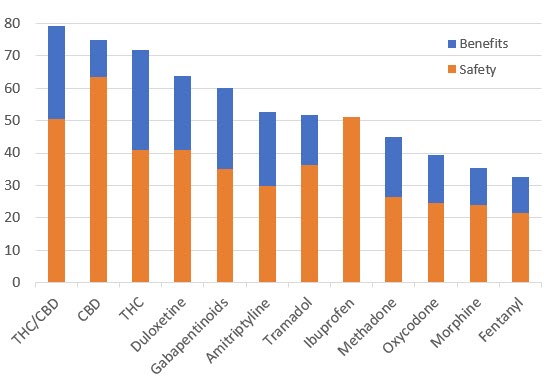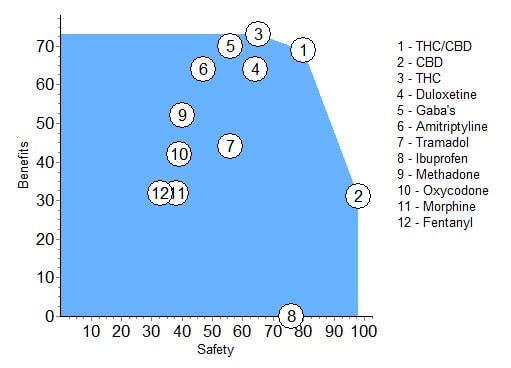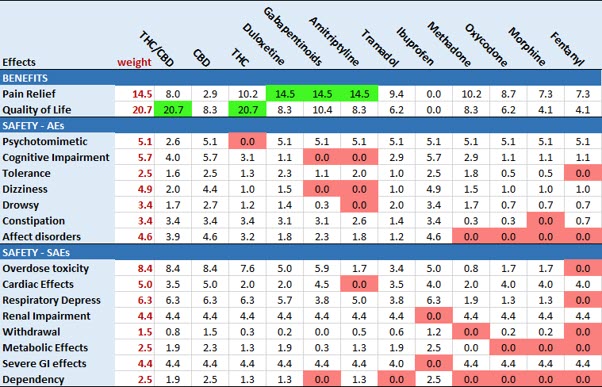Chronic neuropathic pain
.A group of expert clinicians (pain specialists and psychiatrists), scientists, and patient representatives convened to assess the relative benefit–safety balance of 12 pharmacological treatments, including orally administered cannabinoids/cannabis-based medicinal products, for the treatment of CNP in adults. The experts considered two favourable effects:
The also included seven adverse events and eight serious adverse events, shown in the table at the bottom of this page.
- Pain relief
- Quality of life
The also included seven adverse events and eight serious adverse events, shown in the table at the bottom of this page.
The options
The total benefit-safety balance is shown here on a 100-point scale. Green best; Red worst. The numbers represent the overall added clinical value of each drug. They take into account available data for the effects and judgements by the experts about the clinical relevance of the effects.
The total benefit-safety balance is shown here on a 100-point scale. Green best; Red worst. The numbers represent the overall added clinical value of each drug. They take into account available data for the effects and judgements by the experts about the clinical relevance of the effects.
|
Bar graphs
Separate contributions of benefits and safety to the overall totals show different profiles. For example, the three drugs scoring lower than the placebo are all less safe than the placebo, but their benefits are insufficient even to bring their total score above that of the placebo.
Separate contributions of benefits and safety to the overall totals show different profiles. For example, the three drugs scoring lower than the placebo are all less safe than the placebo, but their benefits are insufficient even to bring their total score above that of the placebo.
Dominance graph.
This plot of Benefits versus Safety shows THC dominates the non-cannabinoids, that is, it is better in benefits and equal or better in safety. THC/CBD sacrifices a little benefits for a bigger increment in safety.
This plot of Benefits versus Safety shows THC dominates the non-cannabinoids, that is, it is better in benefits and equal or better in safety. THC/CBD sacrifices a little benefits for a bigger increment in safety.
Effects table.
This table shows the weighted scores for all effects. Green indicates the best effects for Benefits, and Red shows the worst side effects for Safety. Of the non-cannabinoids, only duloxetine receives a green mark and no red ones. It is high scores for THC-CBD on Quality of Life and high scores on Safety that account for its dominance.
This table shows the weighted scores for all effects. Green indicates the best effects for Benefits, and Red shows the worst side effects for Safety. Of the non-cannabinoids, only duloxetine receives a green mark and no red ones. It is high scores for THC-CBD on Quality of Life and high scores on Safety that account for its dominance.
Source: Nutt DJ, Phillips LD, Barnes MP, Brander B, Curran HV, Alan Fayaz DPF, et al. A multi-criteria decision analysis comparing pharmacotherapy for chronic neuropathic pain, including Cannabinoids and Cannabis Based Medical Products. 2020.


